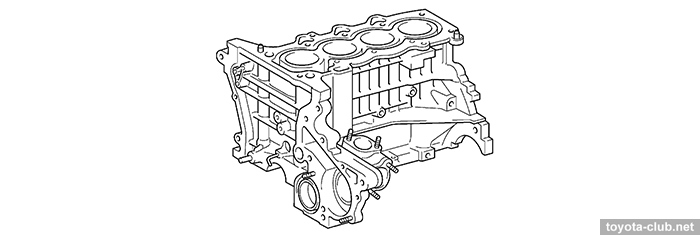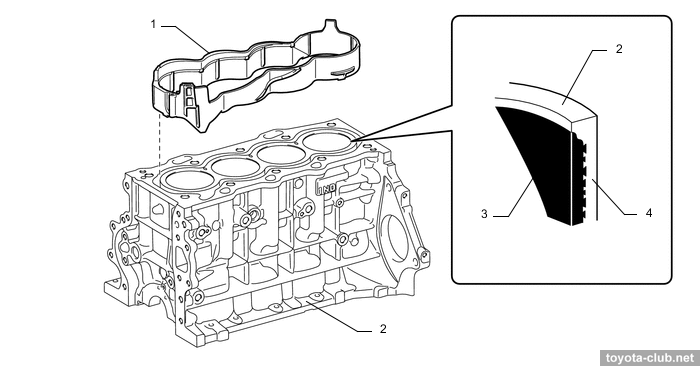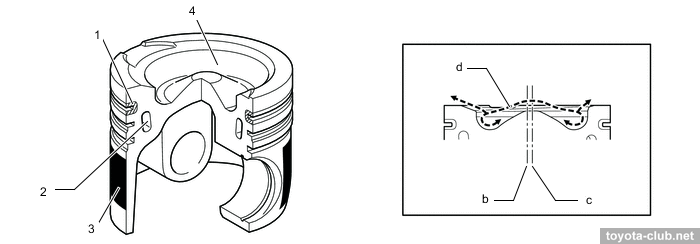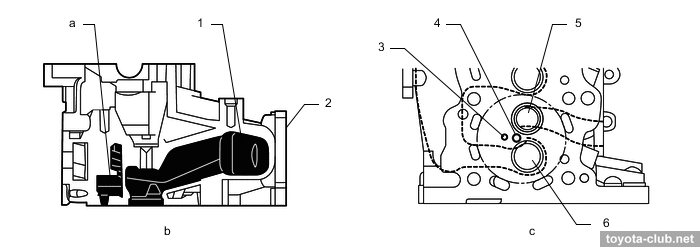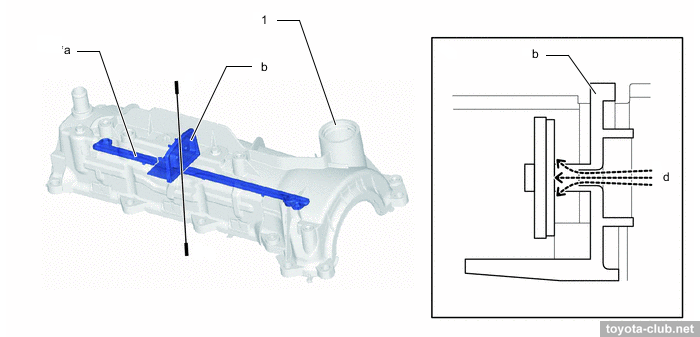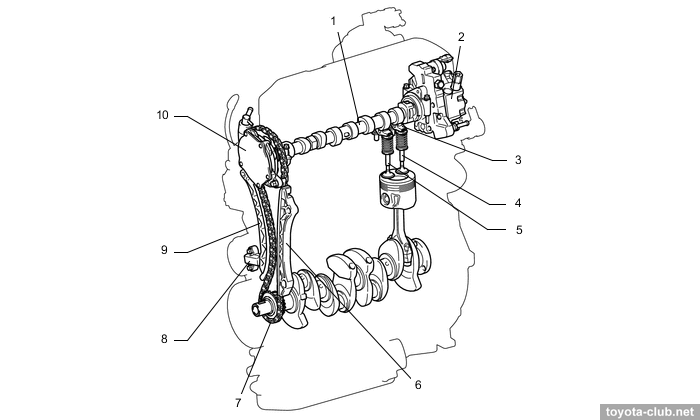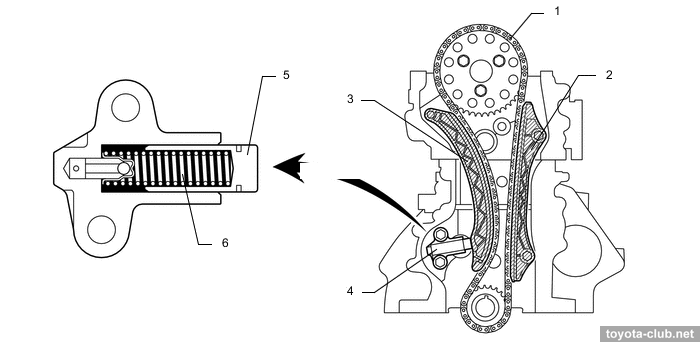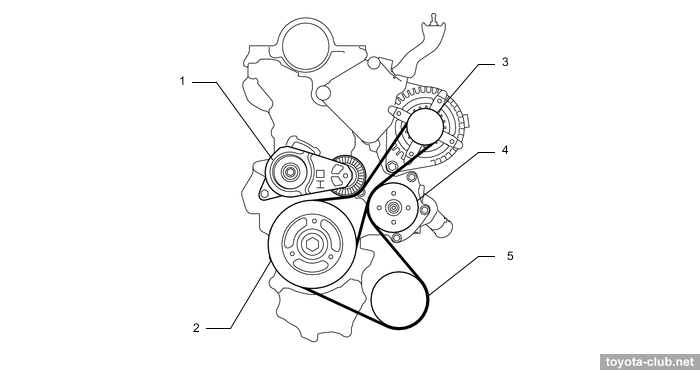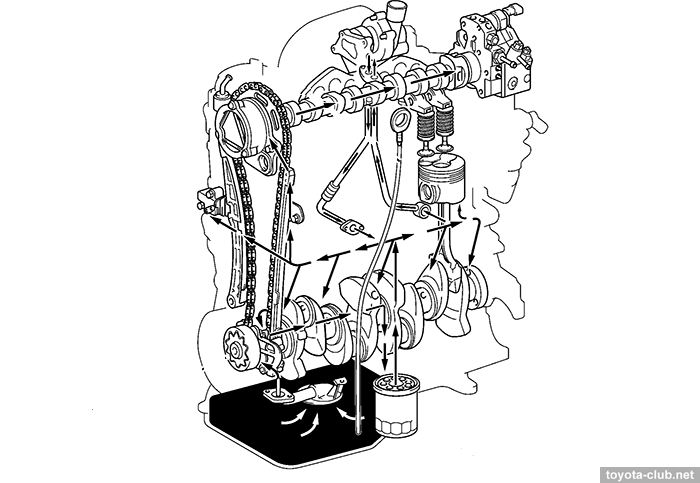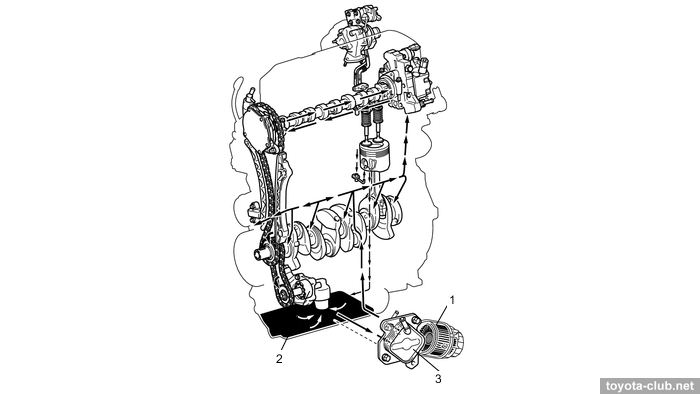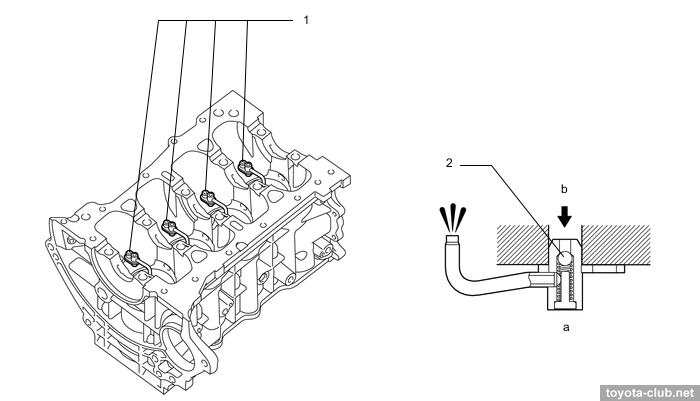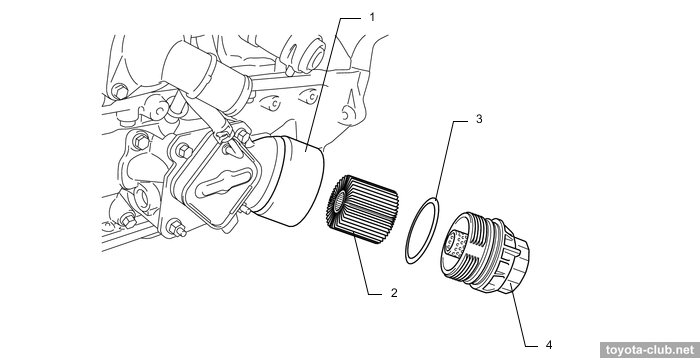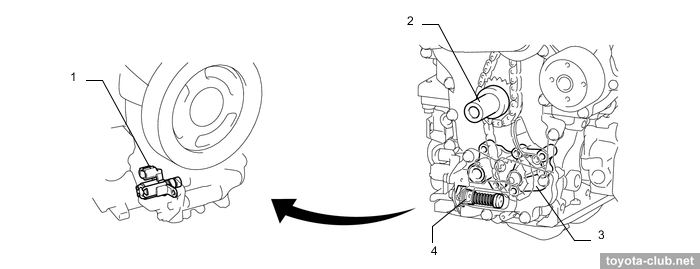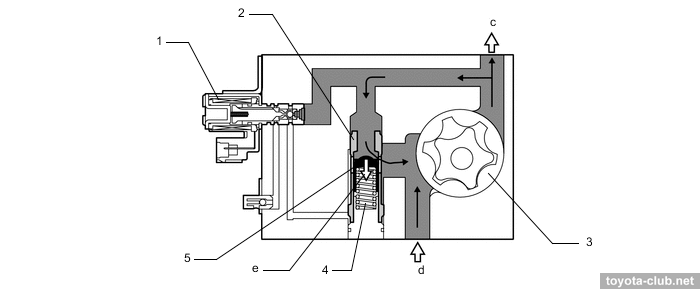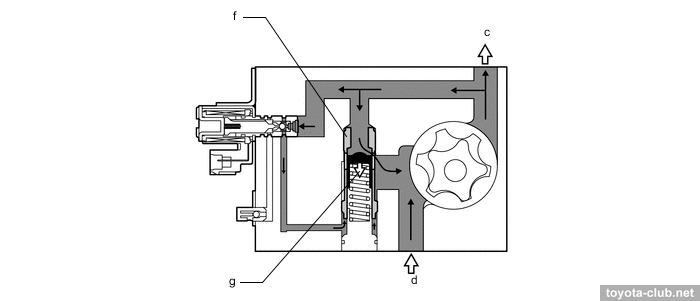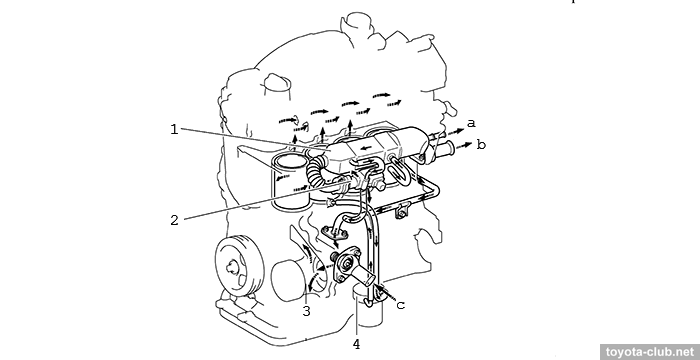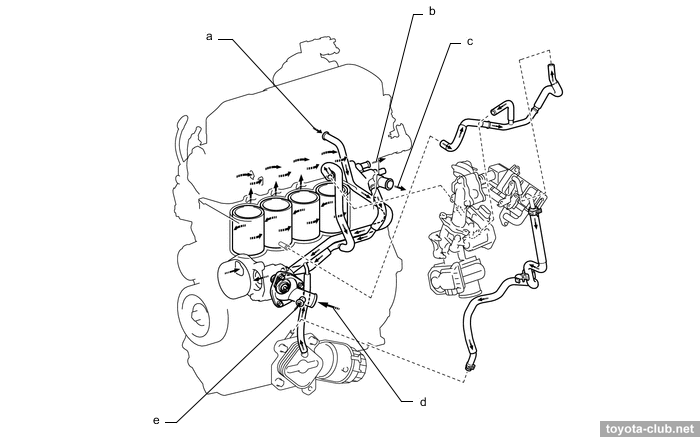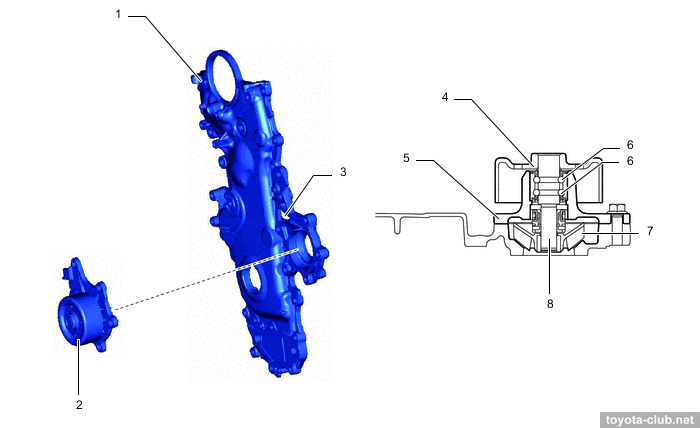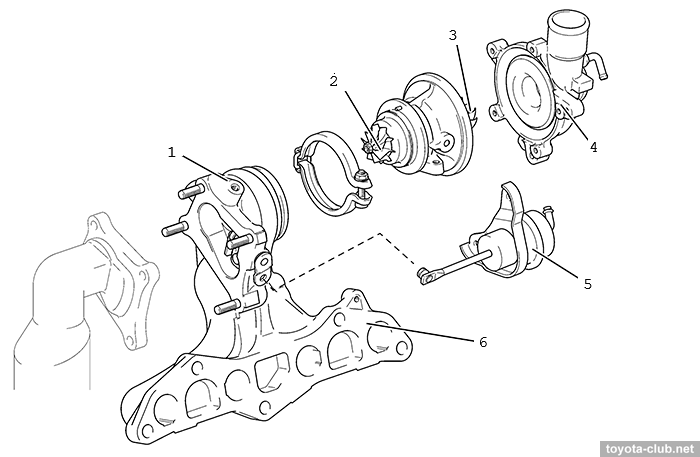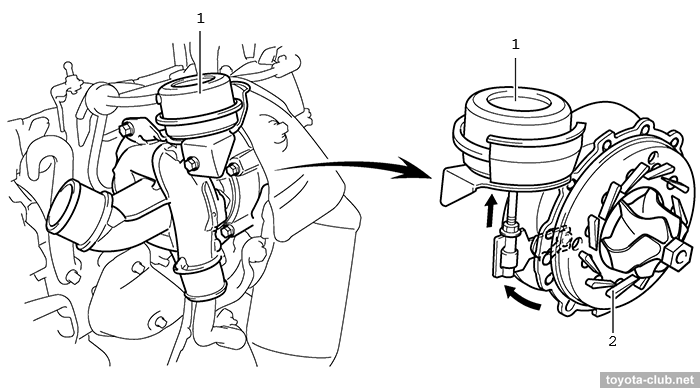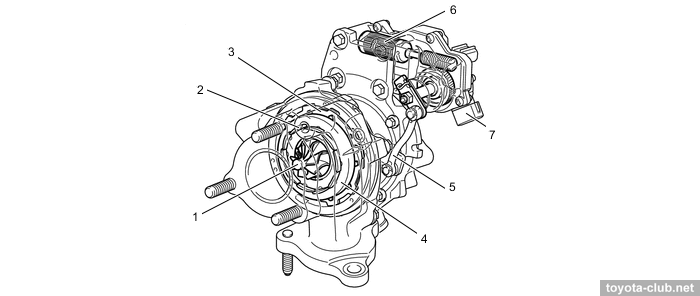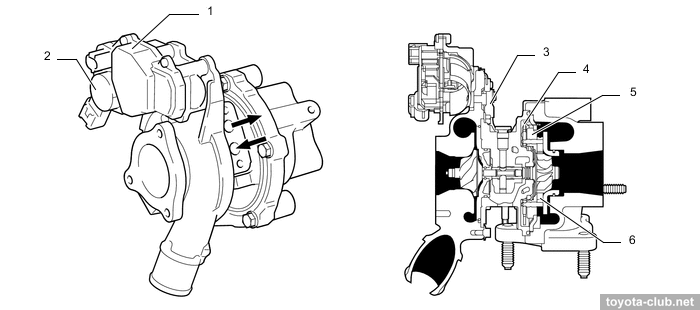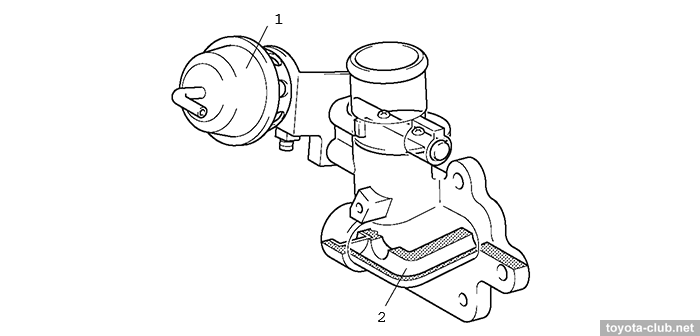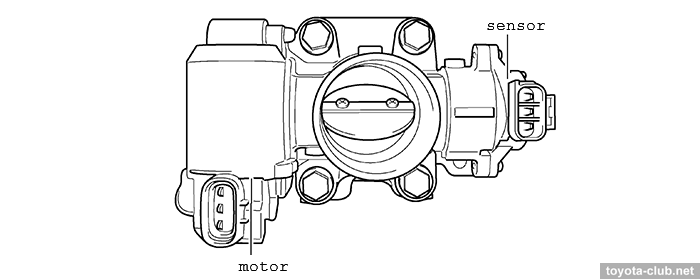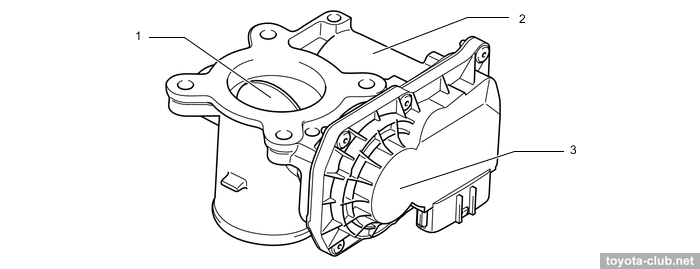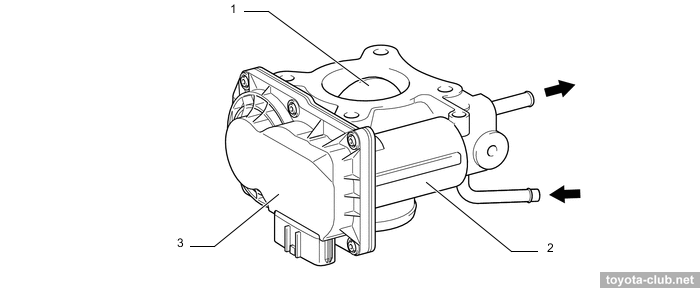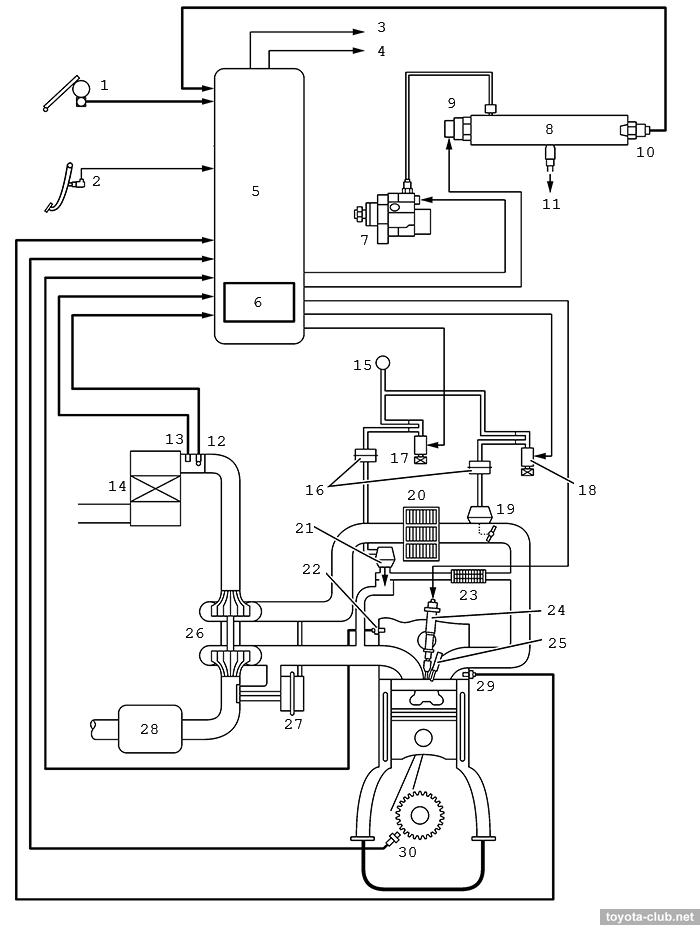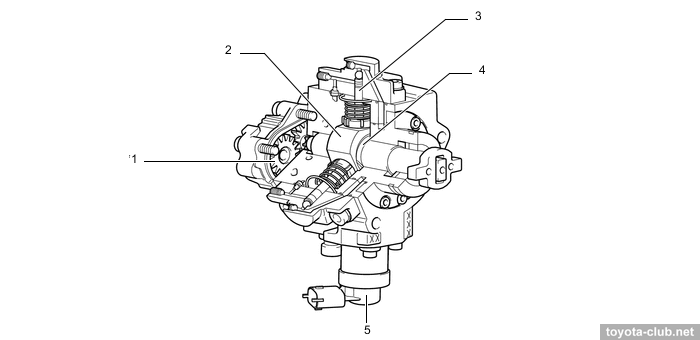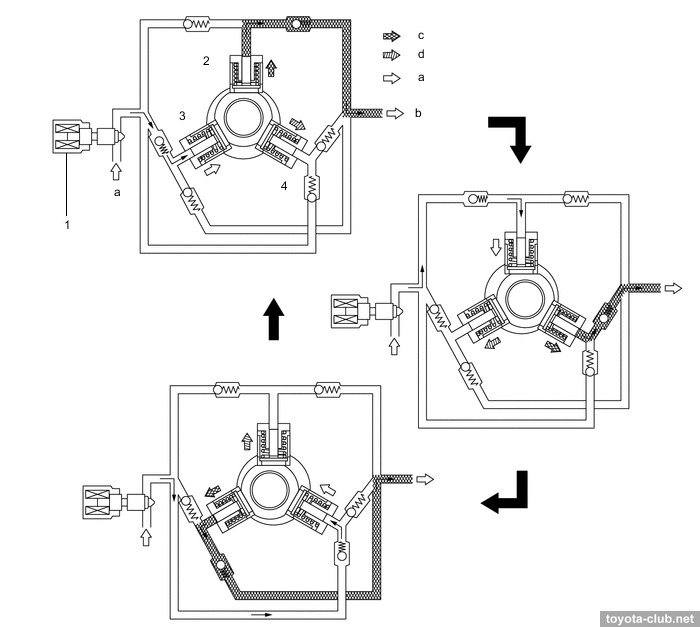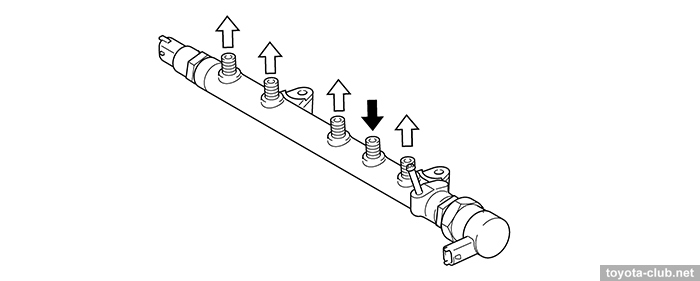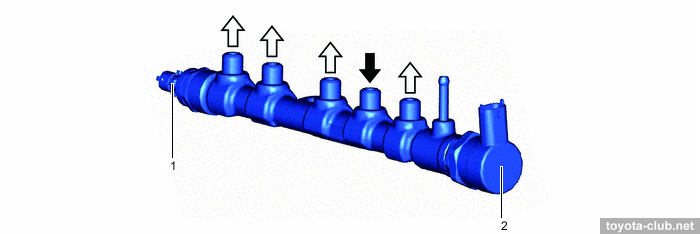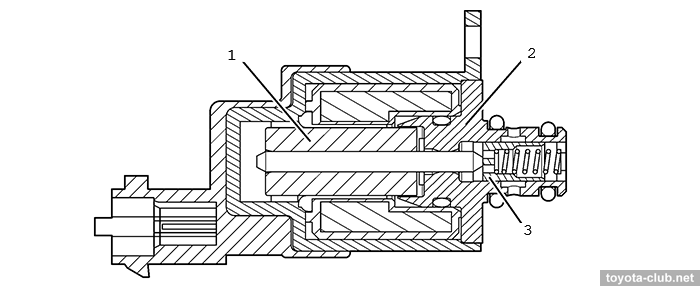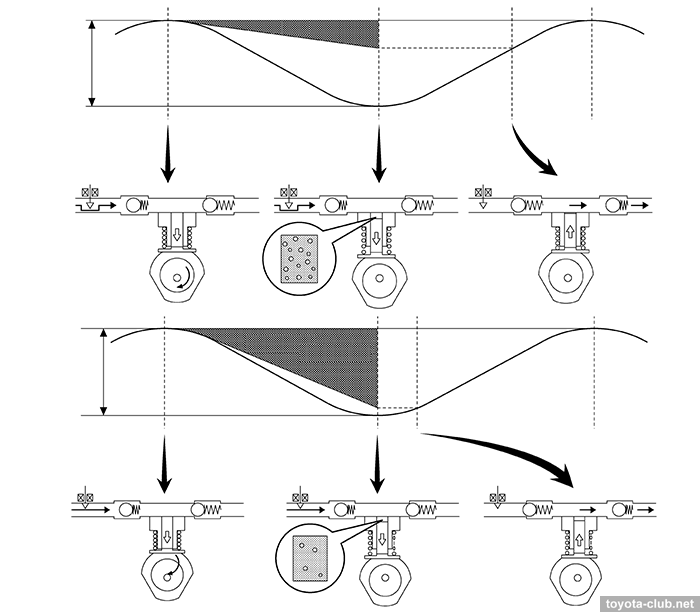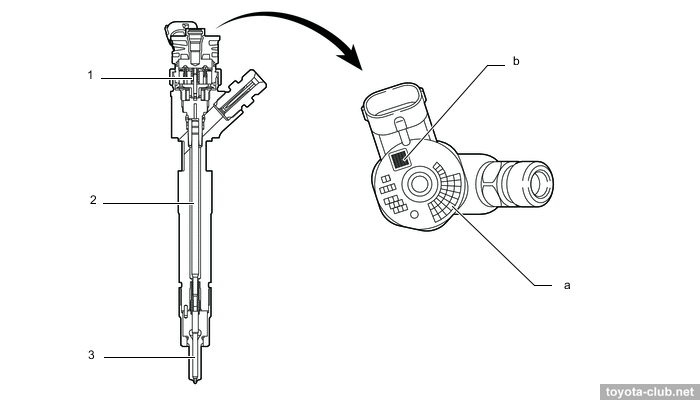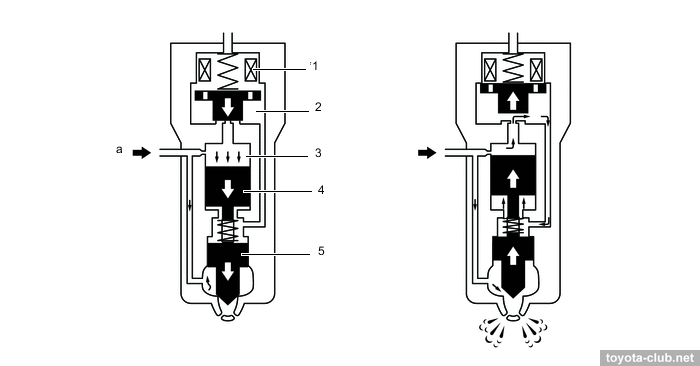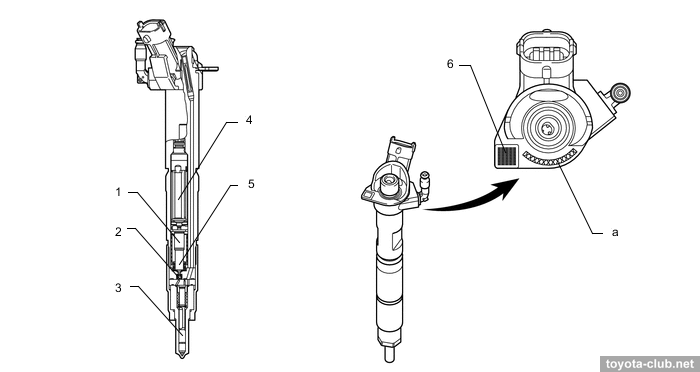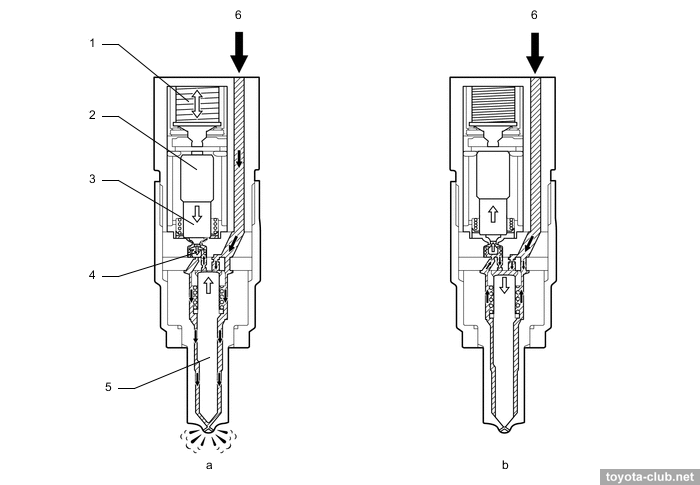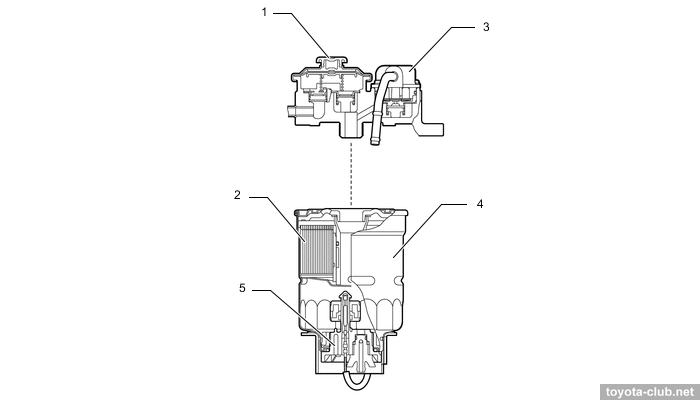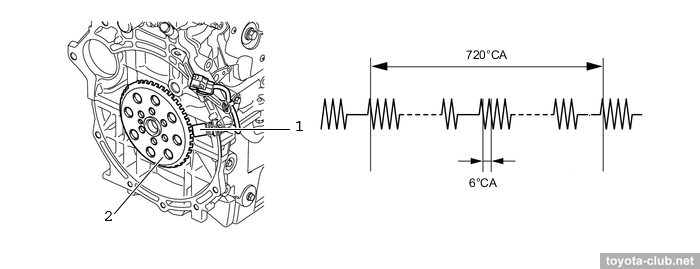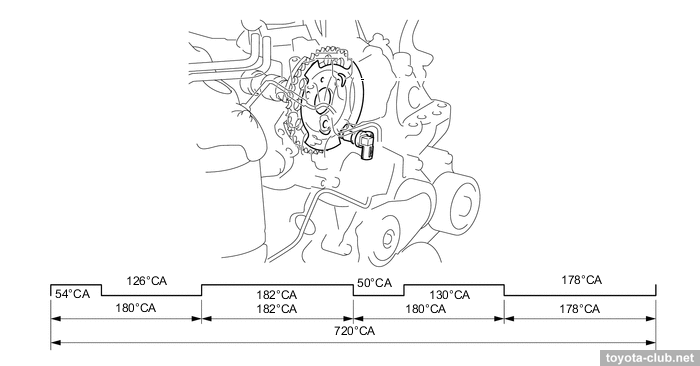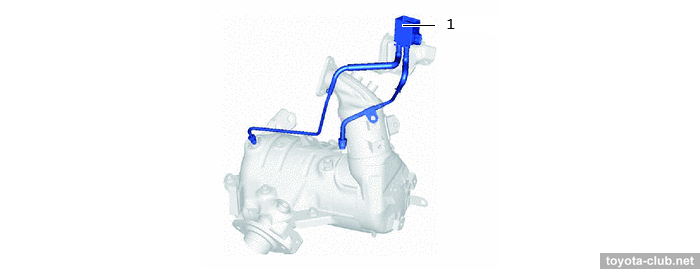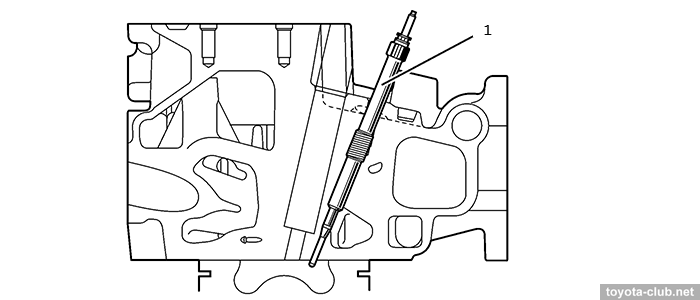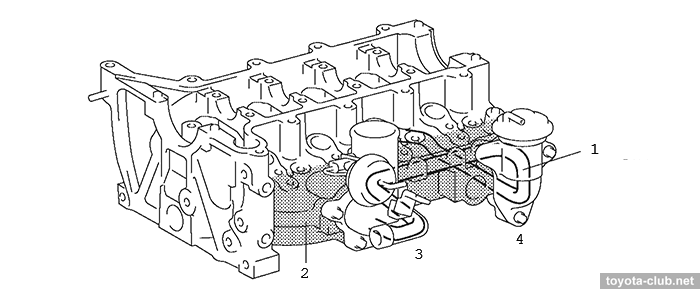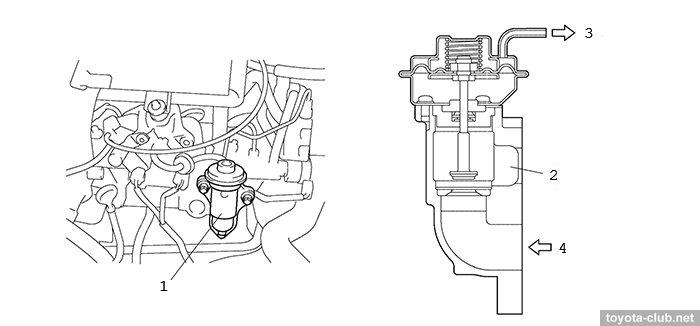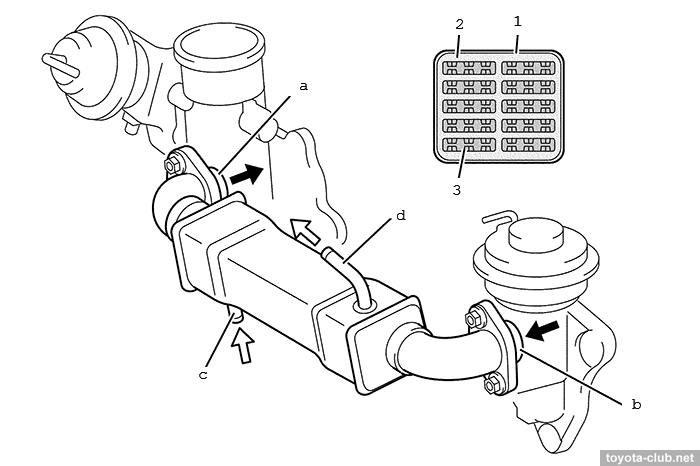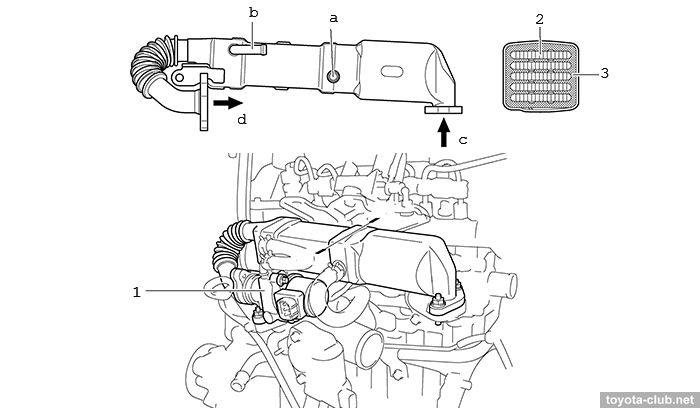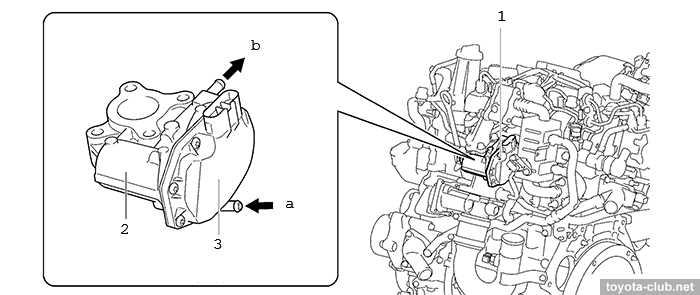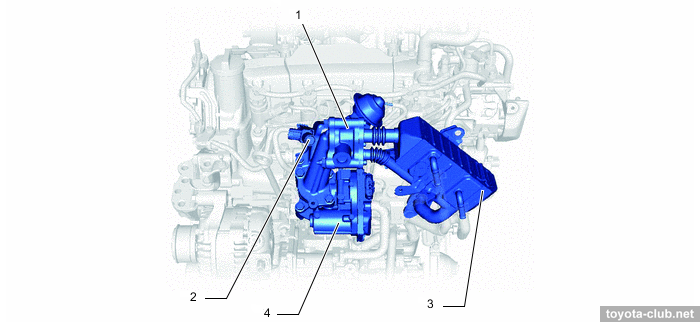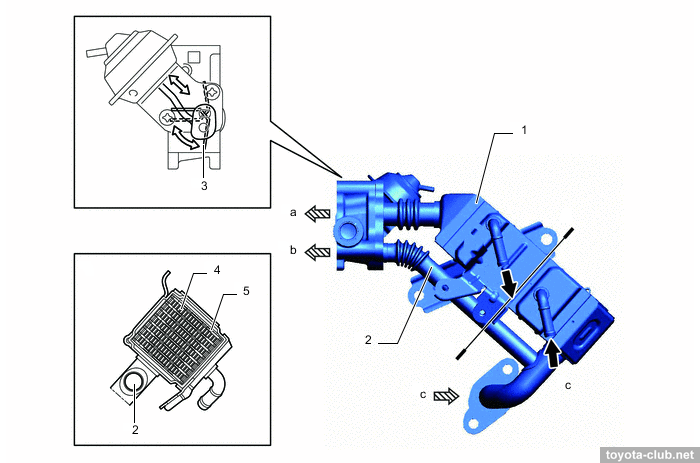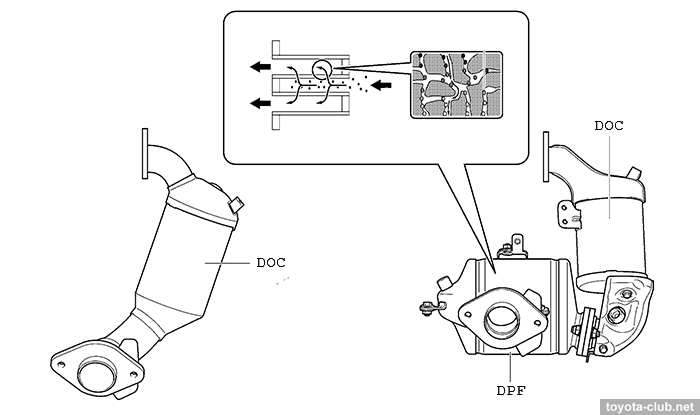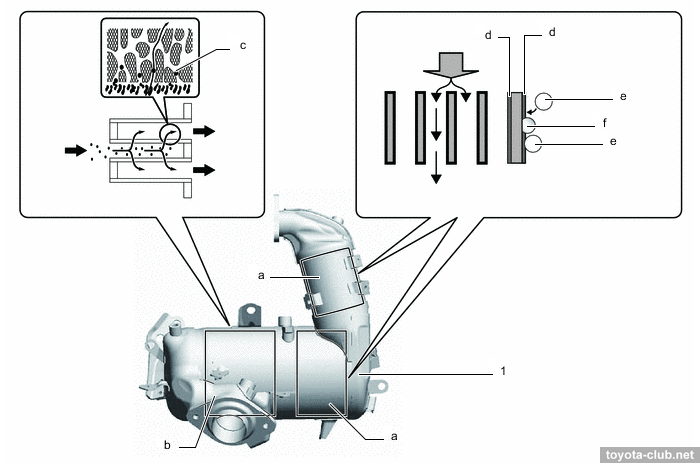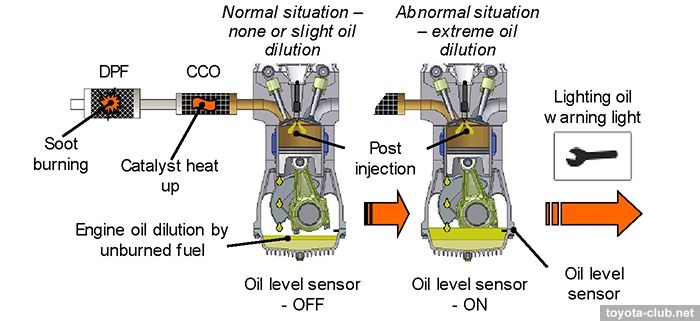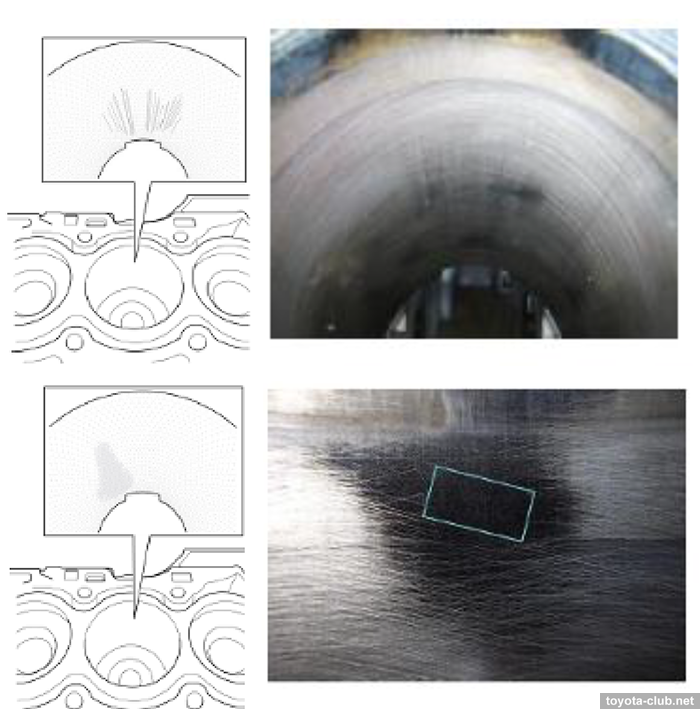|
Eugenio,77
mail@toyota-club.net
© Toyota-Club.Net
Jul 2021

|
ND engines were used in 2001-2020 for B/C-class passenger cars for Europe, Japan and emergency markets. Although the series consists of just a single engine, its variants differ noticeably through the years, make to remember about a whole range of modifications.
Specifications
| Engine | Displacement, cm3 | Bore x Stroke, mm | Compression ratio | Output, PS | Torque, Nm | - |
| 1ND-TV | 1364 | 73.0 x 81.5 |
18.5 | 75 / 4000 | 170 / 2000-2800 | mod'01, E-III |
18.5 | 72 / 4000 | 170 / 2000-2800 | mod'02, JDM |
17.8 | 90 / 3800 | 190 / 1800-3000 | mod'04, E-IV |
- | 68 / 3800 | 170 / 1800-2400 | mod'11, BS-IV |
16.5 | 90 / 3800 | 205 / 1800-2800 | mod'08, E-IV |
16.5 | 90 / 3800 | 205 / 1400-2800 | mod'15, E-VI |
The weight of the engines is 120-125 kg.
Application: Auris NDE150..NDE180, Corolla NDE120..NDE150..NDE180, Corolla/Altis NDE140..NDE170, Etios/Liva/Cross NUK1#, iQ NUJ10, Probox/Succeed Van NLP51V, Urban Cruiser NLP11#, Verso S NLP121, Yaris NLP10..NLP90..NLP130, Yaris Verso NLP2#, Mini One, Subaru Trezia
Engine mechanical
ND was Toyota's first experience with an alloy block and open-deck for a diesel engine. Thin-walled iron-cast liners are fused into a alloy block. Overhaul with reboring not provided.
Mod'01: The coolant pump chamber and the thermostat body are cast with the block.
Mod'08: Special uneven outer surface of liner allows the most durable connection and improved heat dissipation. A spacer is installed in the water jacket to regulate the flow of antifreeze to optimize the cooling of the cylinders.
|
Cylinder block (mod'08). 1 - spacer, 2 - cylinder block, 3 - liner, 4 - liner surface
|
Pistons - aluminium, full-size, with advanced combustion chamber. A cast-iron insert is installed in the groove for the upper compression ring, a cooling channel passes through the head, and a polymer coating is applied to the piston skirt. The piston pins are fully floating.
Mod'15: Piston pins are coated with anti-friction DLC (diamond like carbon) coating.
|
1 - cast iron ring carrier, 2 - cooling channel, 3 - resin coating, 4 - combustion chamber
|
The connecting rod is made of high-strength steel, the cap bolts are screwed directly into the connecting rod.
Crankshaft - steel forged, with 4 counterweights and 5 journals.
|
1 - journal 1, 2 - balance weight, 3 - oil hole, 4 - journal 5
|
A large aluminum crankcase is attached to the block and acts as upper oil pan.
Mod'01: Oil filter bracket is cast with crankcase.
Mod'08: Oil pump is built-in crankcase.
The cylinder head is made of aluminum alloy. The intake manifold is integrated into the cylinder head, the water jacket has a 2-stage structure.
|
1 - intake manifold, 2 - cylinder head, 3 - glow plug hole, 4 - injector hole, 5 - exhaust valve, 6 - intake valve. a - water jacket
|
The camshaft is cast iron, hollow, the cam is induction hardened; there are holes for oil supply to the rockers.
|
1 - camshaft timing sprocket, 2 - rib, 3 - camshaft. a - induction hardening
|
The head cover could be metal or plastic, with a built-in oil line and oil separator.
|
1 - cylinder head cover. a - oil delivery pipe, b - impactor
|
Valvetrain - SOHC 8V type: one camshaft in the cylinder head and two valves per cylinder.
|
1 - camshaft, 2 - injection pump, 3 - rocker arm, 4 - exhaust valve, 5 - intake valve, 6 - vibration damper, 7 - timing chain, 8 - tensioner, 9 - tensioner slipper, 10 - vacuum pump
|
Valve timing for all mods are equal: intake open 4 BTDC, close 36 ABDC; exhaust open 44.8 BBDC, close 4 ATDC.
The camshaft is driven by a roller chain with a 9.525 mm pitch, with a hydraulic tensioner (with an auxiliary spring and a ratchet) and a lubrication nozzle. A vacuum pump and a high-pressure fuel pump are driven from ends of the camshaft.
|
1 - timing chain, 2 - vibration damper, 3 - tensioner slipper, 4 - tensioner, 5 - plunger, 6 - main spring
|
The valves are driven by roller rockers, the clearance is adjusted with a simple screw.
|
1 - adjusting screw, 2 - roller, 3 - rocker arm
|
Auxiliary driven by common belt with automatic tensioner. Early models with hydraulic power steering had a separate belt for its pump.
|
1 - automatic tensioner, 2 - crankshaft, 3 - generator, 4 - coolant pump, 5 - A/C compressor
|
Lubrication
Mod'01: Trochoid oil pump is built-in the timing chain cover and driven by crankshaft.
|
Lubrication system (mod'01)
|
Mod'08: Trochoid oil pump is built-in the crankcase and driven by crankshaft via sub chain.
|
Lubrication system (mod'08): 1 - oil filter, 2 - oil pump, 3 - oil cooler
|
Engine is equipped with oil cooler.
Oil nozzles that lubricate and cool the piston are provided (with check valves).
|
1 - oil jet, 2 - check ball. b - oil
|
The oil filter is mounted on the oil cooler. Since mod'08 an "economic" collapsible filter with replaceable cartridges is used.
|
Oil filter (mod'08). 1 - bracket, 2 - oil filter element, 3 - O-ring, 4 - filter cap
|
Mod'15 DPF: Engine is equipped with a 2-stage oil pump: the valve controls a sleeve that regulates the pump relief pressure, to reduce the powedr loss.
|
1 - oil pressure switching valve, 2 - crankshaft, 3 - oil pump, 4 - relief valve
|
High pressure mode (valve off). Oil is not supplied to the rear of the sleeve, the sleeve is pushed down by the discharge pressure, lowering the relief hole and increasing the spring force required to open the relief valve. The opening pressure increases, increasing the discharge pressure.
|
1 - oil pressure switching valve (OSV), 2 - sleeve valve, 3 - oil pump, 4 - relief valve spring, 5 - relief valve. c - to oil filter, d - from oil pan, e - oil pressure to depress the relief valve (high), f - relief valve pushed up, g - oil pressure to depress the relief valve (low)
|
Low pressure mode (valve on). Oil is supplied to the back of the sleeve, the sleeve is pushed up by the discharge pressure, raising the relief hole position and decreasing the spring force required to open the relief valve. The opening pressure decreases, decreasing discharge pressure.
|
c - to oil filter, d - from oil pan, e - oil pressure to depress the relief valve (high), f - relief valve pushed up, g - oil pressure to depress the relief valve (low)
|
Cooling
Systems from different years differ mainly in the EGR cooling circuits and pump placement.
|
Cooling system (mod'04). 1 - EGR cooler, 2 - EGR valve, 3 - pump, 4 - oil cooler. a - to heater, b - to radiator, c - from radiator
|
|
Cooling system (mod'08). a - from heater, b - to heater, c - to radiator, d - from radiator, e - from reservoir tank
|
Mod'08: Coolant pump is made with alloy housing and stainless steel rotor, and built-in the timing chain cover, driven by serpentine belt.
|
1 - timing chain cover, 2 - coolant pump, 3 - volute chamber, 4 - pump pulley, 5 - pump body, 6 - bearing, 7 - rotor, 8 - shaft
|
Thermostat - "cold" (80-84°C) mechanical.
Oil cooler and EGR system are water-cooled.
Later mods: the cooling fan motor is controlled by ECM.
Intake and exhaust
Mods'01-02: Simple turbocharger CT5C with fixed geometry, integrated in the exhaust manifold. WGT valve is autonomous and controlled by the boost pressure.
Mod'04: Engine is equipped with variable geomtry turbocharger (VGT) of 1st generation (vacuum actuator).
|
Turbocharger (mod'04). 1 - VGT actuator, 2 - vanes
|
Mod'08: Engine is equipped with variable geomtry turbocharger (VGT or VNT) of 2nd generation (electric actuator).
|
Turbocharger (mod'08). 1 - turbine, 2 - nozzle vane, 3 - unison ring, 4 - nozzle ring, 5 - linkage, 6 - turbocharger variable nozzle motor, 7 - nozzle vane position sensor
|
Mod'11 (special version for Etios): Turbocharger with fixed geometry, separated from exhaust manifold, with autonomous WGT valve.
Mod'15: New turbocharger with coolant circuit (for DPF version).
|
Turbocharger (mod'15). 1 - turbocharger variable nozzle motor, 2 - nozzle vane position sensor, 3 - linkage, 4 - unison ring, 5 - nozzle ring, 6 - nozzle vane
|
- At low load and low engine speed actuator moves the control ring and turns pivotally connected vanes to partially closed position. This increases the speed of gas entering the turbine, increases the boost pressure and increases engine torque.
- At high load and high speed vanes are moved to the open position, allowing maintain the desired boost pressure and reduce resistance at exhaust.
To cool the charge air car is equipped with intercooler (early versions - top-mount, later - front-mount).
A throttle valve is installed in the intake. It is used for EGR operation, during regeneration, for smooth stopping the engine.
Mod'01-02: Throttle is vacuum actuated.
Mod'04: Throttle is driven by electric rotary solenoid.
Mod'08: Throttle is driven by DC motor.
|
1 - throttle valve, 2 - motor, 3 - position sensor
|
Mod'15: Throttle module with coolant circuit (for DPF version).
|
1 - throttle valve, 2 - motor, 3 - position sensor
|
Fuel system / Engine control
Unlike other Toyota diesels traditionally used Denso components, ND engines used Bosch components.
|
Engine control system (mod'02, JDM / Probox). 1 - accelerator pedal position sensor, 2 - clutch pedal switch, 3 - check engine lamp, 4 - diagnostic connector, 5 - ECM, 6 - barometric pressure sensor, 7 - injection pump, 8 - common rail, 9 - fuel pressure regulator (DRV), 10 - fuel pressure sensor, 11 - to injectors, 12 - intake air temperature sensor, 13 - air flow sensor, 14 - air filter, 15 - vacuum pump, 16 - vacuum damper, 17 - EGR vacuum regulating valve (EVRV), 18 - throttle vacuum regulating valve (EVRV), 19 - throttle valve actuator, 20 - intercooler, 21 - EGR valve, 22 - camshaft position sensor, 23 - EGR cooler, 24 - injector, 25 - glow plug, 26 - turbocharger, 27 - WGT actuator, 28 - oxidation catalyst, 29 - coolant temperature sensor, 30 - crankshaft position sensor
|
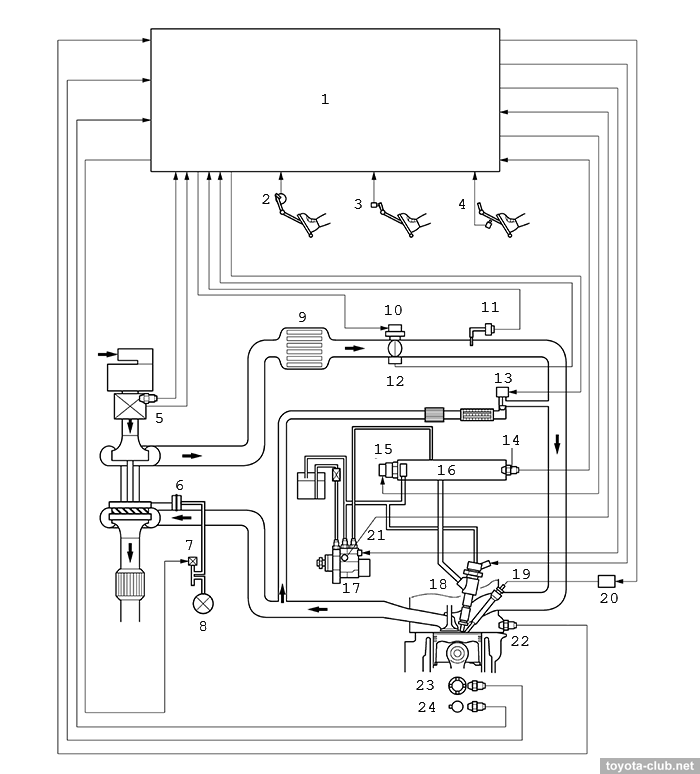
|
|
Engine control system (mod'04, Euro / Corolla 120). 1 - ECM, 2 - accelerator pedal position sensor, 3 - stop lamp switch, 4 - clutch pedal switch, 5 - air flow meter / intake air temperature sensor, 6 - turbocharger (VGT actuator), 7 - vacuum regulating valve (EVRV), 8 - vacuum pump, 9 - intercooler, 10 - throttle valve, 11 - boost pressure sensor, 12 - throttle position sensor, 13 - EGR valve, 14 - fuel pressure sensor, 15 - fuel pressure regulator (DRV), 16 - common rail, 17 - injection pump, 18 - injector, 19 - glow plug, 20 - glow plug relay, 21 - fuel temperature sensor, 22 - coolant temperature sensor, 23 - crankshaft position sensor, 24 - camshaft position sensor
|
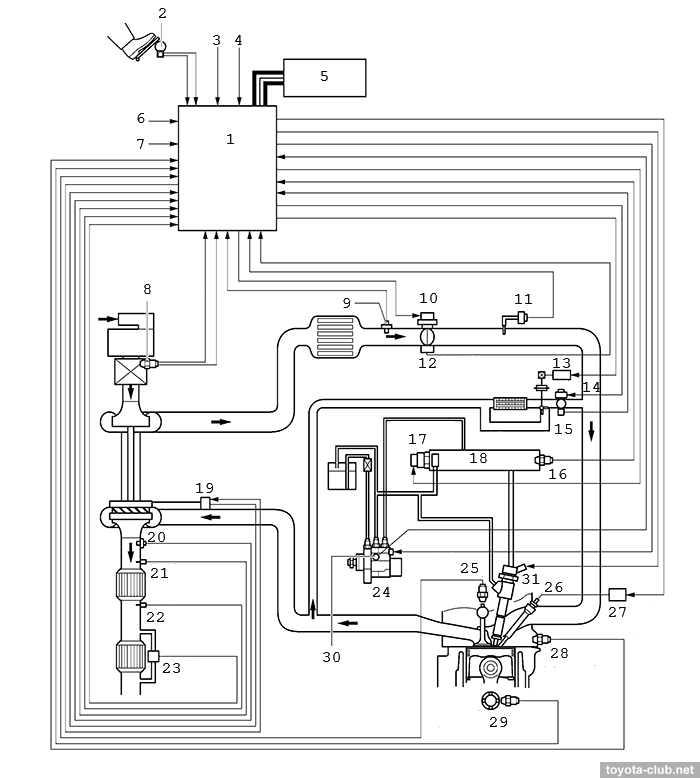
|
|
Engine control system (mod'08, Euro / Corolla 150, DOC+DPF). 1 - ECM, 2 - accelerator pedal position sensor, 3 - clutch pedal switch, 4 - neutral switch, 5 - diagnostic connector, 6 - stop lamp switch, 7 - tail lights switch, 8 - air flow meter / outside temperature sensor, 9 - intake air temperature sensor, 10 - throttle valve actuator, 11 - boost pressure sensor, 12 - throttle position sensor, 13 - EGR cooler bypass VSV, 14 - EGR valve actuator motor, 15 - EGR valve position sensor, 16 - fuel pressure sensor, 17 - fuel pressure regulator (DRV), 18 - common rail, 19 - turbocharger (VGT actuator), 20 - air-fuel ratio sensor, 21 - exhaust gas temperature sensor 1, 22 - exhaust gas temperature sensor 2, 23 - differential pressure sensor, 24 - injection pump, 25 - camshaft position sensor, 26 - glow plug, 27 - glow plug relay, 28 - coolant temperature sensor, 29 - crankshaft position sensor, 30 - fuel temperature sensor, 31 - injector
|
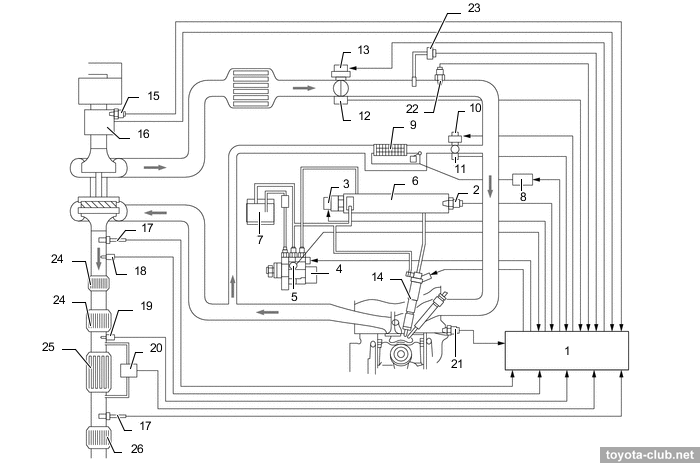
|
|
Engine control system (mod'15, DOC+DPF+NSR). 1 - ECM, 2 - fuel pressure sensor, 3 - fuel pressure regulator, 4 - injection pump, 5 - fuel temperature sensor, 6 - common-rail, 7 - fuel tank, 8 - EGR cooler bypass switching valve, 9 - EGR cooler, 10 - EGR valve, 11 - EGR valve position sensor, 12 - throttle position sensor, 13 - diesel throttle control motor, 14 - injector, 15 - intake air temperature sensor, 16 - intake mass air flow sensor, 17 - air-fuel ratio sensor, 18 - exhaust gas temperature sensor, 19 - exhaust gas temperature sensor 2, 20 - differential pressure sensor, 21 - engine coolant temperature sensor, 22 - turbo pressure sensor, 23 - intake air temperature sensor, 24 - oxidation catalyst, 25 - DPF catalyst, 26 - H2S sweeper
|
Common Rail fuel system - the fuel is supplied by high pressure pump (or injection pump) in a common rail and then is injected into the cylinders via the electronically controlled injectors. The injection pressure - 25/30-160 MPa (mod'01-08) or 30-180 MPa (mod'15).
High pressure supply pump - Bosch CP3 type.
|
1 - gear pump, 2 - outer cam, 3 - plunger, 4 - inner cam, 5 - metering unit
|
Under the action of a rotating inner eccentric cam, an outer cam pushes one of the plungers, pumping fuel into the rail, while a spring pushes the other plunger, which sucks fuel into the injection pump chamber.
|
1 - metering unit (MPROP), 2 - plunger A, 3 - plunger B, 4 - plunger C. a - suction, b - to common-rail, c - pumping finish, d - pumping start
|
A fuel pressure sensor and a controlled pressure relief valve (regulator, DRV) are installed in the fuel rail.
|
Common rail (mod'08). 1 - fuel pressure sensor, 2 - pressure regulator (DRV)
|
Fuel pressure control is carried out both by metering at the injection pump inlet (MPROP) and by metering drain from the rail through the pressure relief valve (Druckregelventil).
|
Metering valve (MPROP) - operation
|
|
Pressure relief valve (DRV).
|
The history of ND injectors has completed a full cycle: for mod'01 solenoid type ones were used, for mod'08 they were replaced by piezoelectric type, since mod'15 for most versions solenoid returned and for mod'17 only solenoid type remained.
Mod'01-02 injectors had a 5-hole nozzle, the individual supply balance was selected by the group method (when replacing the engine assy, all injectors or engine ECU, the deterioration parameter had to be reset). Mod'04 injectors received a 6-hole nozzle, an individual code and DMC (when the injector was first introduced to the ECU, it was required to write its alphanumeric code). Piezo injectors were available in versions with a 6/7-hole nozzle. Solenoid injectors mod'15 already had an 8-hole nozzle.
|
Solenoid type injector. 1 - solenoid, 2 - piston, 3 - nozzle needle. a - injector compensation value, b - DMC
|
Solenoid injector operation:
- When closed, the valve is held by a spring, and the fuel pressure in the control chamber holds the piston in the bottom position, which in turn locks the needle in the closed position (the fuel pressure acting on the bottom of the needle is not enough to open it).
- When the current supply to the coil, the valve opens the channel, through which fuel flows to the bottom of the piston. This reduces the pressure in the control chamber and the pressure increases below the piston, whereby piston moves up. Simultaneously the needle opens and fuel injection occurs.
- After current cut-off valve is closed by the spring. At this point, the pressure in the control chamber increases, the piston moves down, the needle closes and injection is terminated.
|
Solenoid injector operation. 1 - solenoid coil, 2 - solenoid valve, 3 - control chamber, 4 - piston, 5 - nozzle needle. a - fuel
|
|
Piezo type injector. 1 - amplifier piston, 2 - valve bolt, 3 - nozzle needle, 4 - piezo actuator, 5 - valve piston, 6 - DMC. a - injector compensation value
|
Piezoelectric injector operation:
- When voltage is applied to the piezoelectric element its linear dimension changes, pistons and valve move downward. Overlapped by top of the valve drain channel from control chamber opens. Pressure in the control chamber drops. The needle moves up and fuel injection occurs.
- After current cut-off the pistons and valve returns by springs. Drain channel is closed. The pressure in the control chamber increases. The needle moves down and fuel injection stops.
- At idling control unit lowers the voltage applied and reduce injector operation speed. This helps to reduce noise.
|
Piezoinjector operation: 1 - piezo actuator, 2 - amplifier piston, 3 - valve piston, 4 - valve bolt, 5 - nozzle needle, 6 - fuel. a - during injection, b - while stopped
|
The fuel filter with a priming pump and a fuel sedimenter level warning switch is supplemented with a recirculating type pseudo-heater (through which fuel heated in the injection pump is passed).
|
1 - priming pump, 2 - filter element, 3 - fuel heater, 4 - fuel filter, 5 - fuel sedimenter level warning switch
|
There are following sensors in the system:
- air flow sensor (MAF) / air temperature sensor (early - hot wire, mod'15 - silicon chip type)
- crankshaft position - induction type
- camshaft position - Hall type (early) or MRE type (later)
- throttle position (since mod'04, Hall effect)
- accelerator position (early - potentiometer, later - Hall effect)
- boost pressure
- fuel pressure
- fuel temperature (since mod'04)
- ambient temperature
- coolant temperature
Since mod'08 step-by-step added:
- air-fuel ratio sensor
- DPF differential pressure sensor
|
1 - differential pressure sensor
|
- exhaust temperature sensors
- air-fuel ratio sensor, downstream catalyst
- oil level sensor
The glow plugs are unremarkable.
The function of engine oil condition monitoring provided: the oil change indicator light switch on after 14.500 km or if estimated soot content in oil exceeded threshold or if the oil level exceeded.
DTC codes of 1ND-TV
Ecology / Exhaust aftertreatment
• An indispensable attribute of all ND versions is EGR (Exhaust Gas Recirculation) system, which, by bypassing a certain amount of gases at the intake, lowers the maximum temperature in the cylinder and helps to reduce nitrogen oxide emissions.
Mod'01: Simple system - with a vacuum actuator of EGR valve and without external cooler.
|
1 - EGR passage, 2 - intake manifold, 3 - throttle valve, 4 - EGR valve
|
|
1 - EGR valve, 2 - EGR passage, 3 - к EVRV, 4 - exhaust gases
|
Mod'02: Engine equipped with external EGR cooler.
|
1 - core, 2 - coolant, 3 - gases. a - EGR outlet, b - EGR inlet, c - coolant inlet, d - coolant outlet
|
Mod'04: EGR valve is driven by electric step-motor.
|
1 - EGR valve, 2 - gases, 3 - coolant. a - coolant inlet, b - coolant outlet, c - EGR inlet, d - EGR - outlet
|
Mod'08: EGR valve is driven by DC motor.
|
1 - EGR valve, 2 - motor, 3 - position sensor. a - coolant inlet, b - coolant outlet,
|
Mod'08: To avoid excessive cooling of exhaust gases at low load, EGR cooler valve send gas flow bypass the radiator.
|
1 - EGR bypass valve, 2 - EGR cooler bypass switching valve, 3 - EGR cooler, 4 - EGR control valve
|
|
1 - cooler core, 2 - bypass passage, 3 - EGR cooler bypass valve, 4 - EGR gas passage, 5 - water passage. a - out (cooled), b - out, c - in
|
• DOC (oxidation catalyst) - primary stage of exhaust gas cleaning - oxidizes hydrocarbons and carbon monoxide to water and carbon dioxide. Used for all versions since Japanese mod'02.
• DPF (diesel particulate filter) - used to accumulation and combustion of soot particles. It was installed sequentially with DOC, since mod'08 (optional for Euro-IV and mandatory for subsequent versions). The condition of the particulate filter is monitored by a differential pressure sensor.
• NSR catalyst (NOx Storage Reduction), which is supposed to convert NOx, CH and CO to H2O, CO2 and N2. Appeared on the latest modifications in addition to DPF. Also, an H2S catalyst appeared at the end, which must fight excess hydrogen sulfide when cleaning the system from sulfur accumulations.
|
1 - exhaust manifold converter. a - NSR catalyst, b - DPF, c - PM, d - NOx storage layer, e - NOx, f - Pt
|
The main problem of 1ND-TV engines is total and unavoidable - they have never been aggregated with automatic transmissions, only with manual or, much less often, with extremely unsuccessful Toyota MMT robots.
Nevertheless, a number of well-used Yaris and Auris from the European aftermarket reached the western regions, and in the east, 1-2% of Probox/Succeed run on diesel fuel.
Looking through the local publications about 1ND-TV motors, at first it is difficult to understand where so many excellent epithets come from in relation to an objectively mediocre engine. It's all about the geography of the authors - in Baltic and East European lands, among the absolute domination of used European cars, even this Toyota diesel seems reliable and unpretentious.
• Low and/or uneven cylinder compression has become a tradition for rather older 1ND-TV. If, at the same time, there is clearly an excess pressure of crankcase gases and noticable oil consumption, then the diagnosis and optimal treatment are clear to everyone. But, unlike gasoline engines, the situation with the offer of good-condition second hand diesel engines is very sad (since a meager number of such cars was delivered to the Japanese market).
• Early modifications were susceptible to the mass phenomenon of cylinder head gasket damage, which often occurred even within the warranty period. The defect usually developed between the cylinder and the cooling channel, so that oil could be avoided from ingress in antifreeze, but the rest of the symptoms were classic.
• Like all modern small-displacement diesel engines, 1ND-TV is so efficient that in real winter conditions it hardly warms up itself and does not provide enough heat to the saloon.
• Glow plugs are usually remembered when one or two of them remain in order, and here the main difficulty is to unscrew them from the cylinder head.
• Abundant carbon deposits on the EGR elements and in the intake affect engine operation and require periodic cleaning. However, practice also shows the ability to successfully plug EGR (especially early versions).
• Faced with oil consumption and excess oil traces in the intake or exhaust ducts, the owners sometimes immediately go to replace the turbocharger - however, in some cases, the cause-and-effect relationships are somewhat different.
• In the fuel system, the main source of problems is the rail pressure regulator, which is susceptible to both clogging and wear (this seems somewhat unusual comparing to Denso systems, where pressure is regulated only by metering at the injection pump inlet). Traditionally, the second place is for injectors - the good thing is that, at least for mod'01-04, Bosch solenoid injectors are considered both relatively inexpensive and maintainable. It should be said especially - formally, even solenoid injector cannot be overhauled, and when they are replaced, it is necessary to program individual injection volume correction codes in the engine control unit - this engine, apparently, really has a good durability, because it is able to survive after such garage repair of injectors without any codes and corrections, that would instantly cause destruction of pistons on many other diesel engines. Piezo injectors are non-repairable by definition.
And one general pattern: the farther from a large civilization, the more complaints from owners about a capricious fuel system - that is, even by the turn of the 2020s, the quality of diesel fuel has not yet reached high world standards everywhere.
• The super-late post-injection mode, which appeared along with the particulate filter, leads to the fact that part of the fuel flows into the crankcase and significantly increases the oil level (up to certain limits is considered normal operation
- TSB instructs to clarify this to the owners). Subsequently, the diesel fuel evaporates, but for the the mechanical part of the engine working on a liquefied oil-fuel mixture is not very useful, and the oil deteriorating is faster. In the event of regeneration failures or malfunctioning injectors, the oil level exceeds all permissible limits, requiring intervention.
Traditionally, it is worth to look at TSB with officially recognized faults and modified parts:
• EG-4009 "1ND-TV Engine White Smoke from the Exhaust" (01.10.2004)
• EG-7015 "Scraping noise from timing chain" (01.03.2007, timing chain replacement with sprockets, tensioner slipper and damper for pre-07.2006 cars)
• EG-7046 "1ND Engine jerking" (01.10.2007, ECU replacement)
• EG-0042T-0908 "1ND engine - DTC P0487 exhaust gas recirculation throttle position control
circuit" (11.09.2008, replace the ECU)
• EG-0069T-1208 "1ND Engine - excessive whistling noise from turbocharger during driving" (12.12.2008).
The problem is the turbine whistling when driving and rpm above 1600 due to imbalance (because of thermal stress during welding). Prescription - turbocharger 17201-0N030 replacement
• EG-9014 "ND series engine, turbocharger oil leak and white smoke" (01.08.2009)
• EG-9015 "ND series engine, turbocharger noise" (01.08.2009)
• EG-0054T-0110 "Difficult to start followed with unstable idle in cold condition" (06.01.2010)
The problem is difficult starting of the engine at temperatures below 5°C or unstable running immediately after a cold start. Prescription - reprogram ECU and replace injectors (23670-39325> 04009-47133, modified form of the nozzle)
• EG-0071T-0610 "Engine stall, lack of power or MIL-on combined with DTC P1229/P1272/P0087/P0400" (08.06.2010, reprogram ECU)
• EG-0075T-0710 "DTC P0340 camshaft position sensor A circuit" (13.07.2010, replace ECU)
• EG-1006 "Change of 1ND-TV engine oil capacity" (22.09.2011, the capacity of lubrication system has been reduced by about half a liter (apparently, as a reserve for the fuel draining into the crankcase))
• EG-0047T-0512 "1ND-TV Euro 5 - MIL ON with DTC P2463 on low mileage vehicles" (09.05.2012, reprogram ECU)
• EG-0040T-0611 "1ND-TV Euro IV - Engine oil level is too high - DTC P252F" (24.08.2012)
• EG-0102T-1212 "08 1ND - DTC P0045 (& P0046), Turbocharger" (29.10.2013, replace turbocharger 17201-0N042)
• EG-0130T-1014 "Method for cleaning EGR cooler after DTC P2BAB" (16.10.2014, clean EGR cooler)
• 4KET-1205 "Intake system and Engine Management ECU update" (25.11.2014)
Recall campaign for 2008-2014 models - intercooler and ECU reprogram
• EG-0006T-0115 "1ND engine MIL On and DTC P252F stored in ECU memory" (08.01.2015, replace oil level sensor 89491-52051)
• EG-0009T-0216 "1ND TV - Oil leakage through cylinder head cover gasket" (19.02.2016,
replace of cylinder head cover gasket 11213-33030 > 11213-33031)
• EG-0123T-1215 "1ND P1229 due to deposit in fuel tank" (14.03.2016, replace fuel strainer - no warranty)
• Pair of TSB related to the oil consumption:
EG-0017T-0411 "1ND-TV Euro 4, Euro 5 - Engine oil consumption REMAN" (31.01.2017)
EG-0074T-0514 "1ND-TV Euro 4, Euro 5 - Engine oil consumption NON REMAN" (31.01.2017)
Complaint: the need for frequent oil top-up, blue smoke from exhaust.
Oil consumption of up to 0.3 liters per 1000 km is recognized as the norm, 0.3-0.5 - as the norm for severe conditions, more than 0.5 - as a warranty case.
For some owners (more lucky) is prescribed to replace the complete cylinder block (short block (11400-0N060-84, 11400-0N070-84, 11400-0N080). For others is prescribed to just replace a set of pistons and piston rings, plus check the condition of the block (scratches are unacceptable with a depth of more than 10 microns (felt with a fingernail) or spots of complete wear of the hone in the upper part of the liner with an area of more than 1.5 cm2)
• EG-0020T-0411 "1ND Euro 4,5 - Method for clearing the DTC P2463" (03.02.2017)
• EG-0021T-0411 "1ND-TV P0046 after turbo replacement" (03.02.2017)
• EG-0057T-0916 "1ND EURO 6 Supply Pump Noise" (03.05.2017, reprogram ECU)
• EG-0070T-0715 "1ND Oil level increase (DTC P252F) and/or DPF clogged (DTC P2463) for DPF equipped vehicles" (04.07.2017, a very long algorithm of checks comes down to a variety of prescriptions - from some trifles to replacing the cylinder block)
• EG-0116T-1115 "1ND Euro 6 - Method for clearing the DTC P2463" (03.08.2017, ECU recalibration)
• EG-00060T-TME "ND Engine: MIL ON (P042E) caused by EGR Valve" (28.08.2018, replace EGR valve EGR 25800-33011)
|
Toyota engines review
·
AZ ·
MZ ·
NZ ·
SZ ·
ZZ ·
AR ·
GR ·
KR ·
NR ·
ZR ·
AD ·
GD ·
ND ·
VD ·
A25.M20 ·
F33 ·
G16 ·
M15 ·
T24 ·
V35 ·
|
|
|


